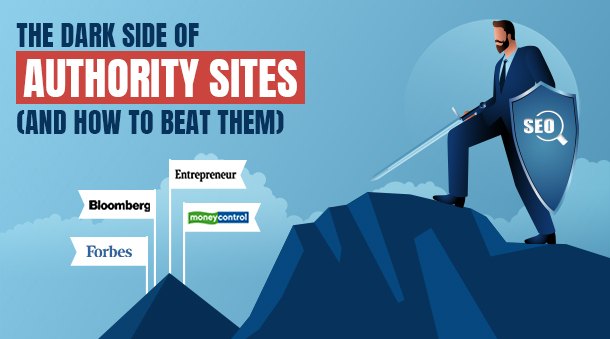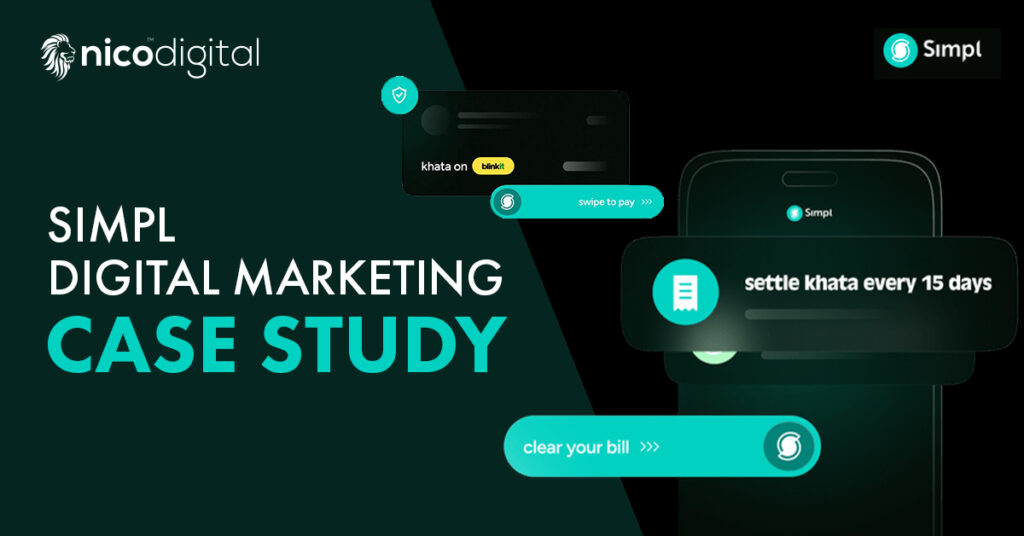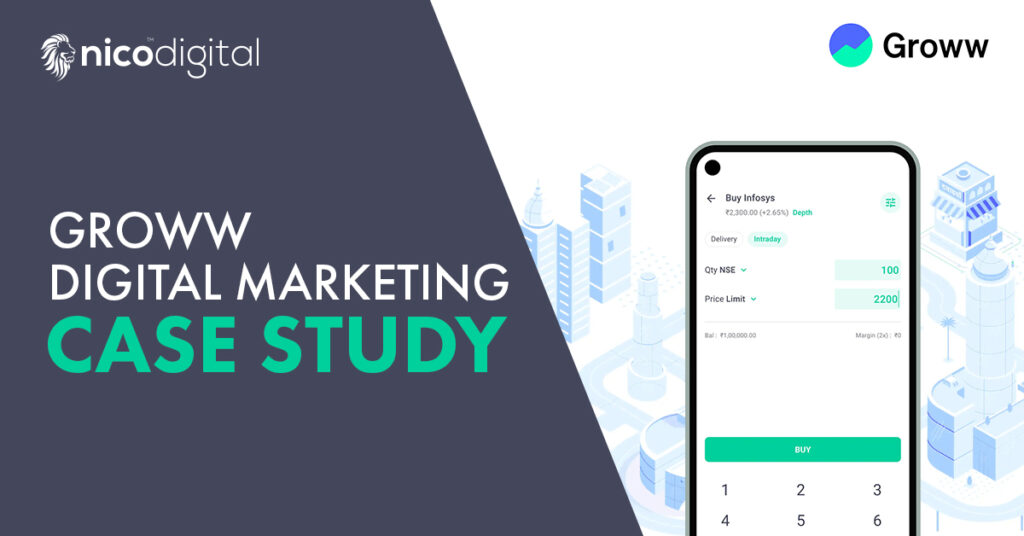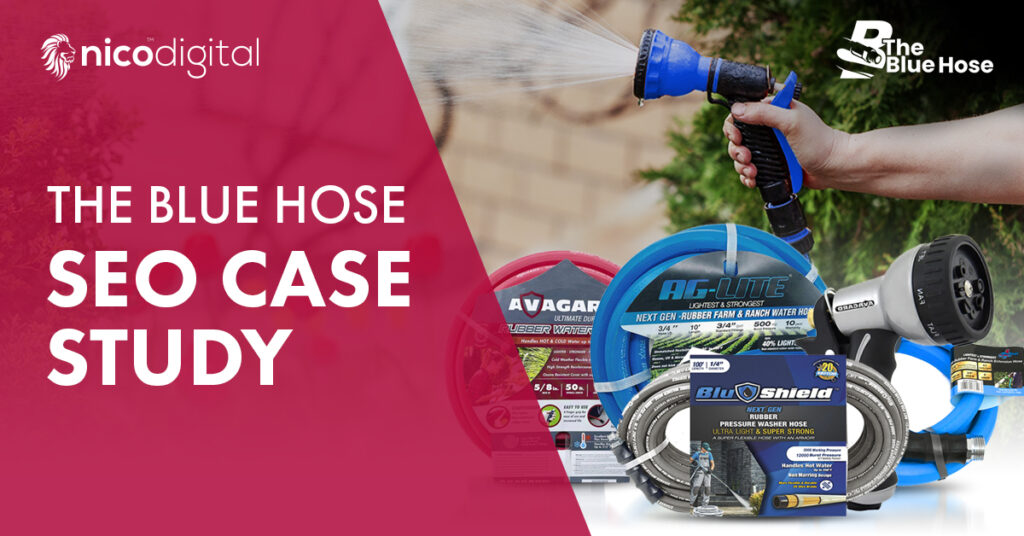
I hope y’all are enjoying the stories that I have been telling lately, from my own personal experiences, running a fast-paced and thriving global SEO agency.
And the daily stories, setbacks, and occasional mayhem that come, as a part and parcel of marketing life.
If yes, here’s another one. And a lot to learn here.
The Unjust Rewards
It was an odd time to start with…around 2 a.m., and I was staring at my laptop, watching a keyword report that felt like a bad joke.
We’d just finished crafting the perfect guide for a fintech client. It was detailed, data-backed, and written by a subject-matter expert with 12 years in the finance industry. It had everything…a step-by-step breakdowns, interactive calculators, even case studies.
It was better than anything on the first page. I knew it. My client knew it.
But when we hit “publish” and waited for rankings?
We had landed somewhere around page 5, while the top 3 spots were Forbes, Nerdwallet, and a banking blog which was so bland and outdated, that it might as well have been written by a chatbot from 2012.
Curious as to what these sites were offering, I clicked on the Forbes article.
And? Just 800 words of generic fluff. No original research. And it was riddled with outdated info!
Yet, it was at the top spot. Laughing at us.
That’s when it hit me!
Google wasn’t just rewarding good content.
Google was rewarding authority sites…the big names, the blue-check media outlets, the ones that have been around for decades.
Google rewards authority sites for their trust and credibility signals.
And here’s the worst part:
They can get away with mediocre content and still outrank you.
But… what if I told you we figured out a way to turn their biggest strength into our biggest weapon? And beat them at their own game?
The Problem: Why Authority Sites Dominate Even When They Shouldn’t
Let’s first understand one SEO term that has been around for long. Brand Bias.
It’s the reason why, when you search for “best high-yield savings accounts,” you’ll often see sites like NerdWallet, Investopedia, or Forbes…even if their content feels like a copy-paste of last year’s list.
Brand bias is Google’s tendency to rank well-known brands higher, even if their content isn’t the best.
Google rewards the domain names, the names with authority and power. You can think of it as like algorithmic nepotism.
In short, Google loves authority more than anything.
And authority, in the algorithm’s eyes, isn’t just about your content. It’s about:
- Domain age: Older sites tend to have a trust advantage.
- Backlink profile: Authority sites have thousands of links from other credible domains.
- Internal linking strength: They link aggressively between their own articles, creating an impenetrable web of relevance.
- Brand searches: Millions of people search for “Forbes” or “NerdWallet” every month, signaling trust.
This creates a vicious cycle:
- Authority sites publish something mediocre.
- Google ranks it high because they’re “trusted.”
- High rankings bring them more clicks and links.
- The gap between them and smaller brands widens.
It’s the SEO equivalent of showing up to a marathon where your competitor gets to start at mile 20.
Not fair right? No. It’s absolutely rigged.
The Hack: How We Beat Them at Their Own Game
Here’s the thing. You can’t instantly replicate the decades of brand building that Forbes and other market Goliaths have put their efforts into. But…you can certainly replicate one of their biggest advantages.
Their internal linking power!
In fact, when we worked with a fintech startup last year, we did exactly that. And within 4 months, we were outranking the same authority sites that used to crush us.
Here’s how we pulled it off.
Step 1: We Mapped Their Internal Linking Structure
Topic clustering is something that authority sites excel at. For example, creating a networked ecosystem in which each article supports the others rather than merely writing sporadic blog posts.
For example, NerdWallet’s “Best Credit Cards” page might link to:
- “Best Travel Credit Cards”
- “Best Balance Transfer Cards”
- “How to Choose a Credit Card”
- “Credit Card Fees Explained”
And each of those sub-pages links back to the main page, sending a strong signal to Google: This is the central, most important resource on the topic.
We used tools like Ahrefs and Screaming Frog to crawl their site and visualize how these pages were linked.
Step 2: We Built Our Own “Power Hubs”
Instead of publishing content that was scattered, we grouped topics into pillar pages and supporting articles.
This is an example for our fintech client:
Pillar page: “The Ultimate Guide to High-Yield Savings Accounts”
Supporting articles:
- “Best High-Yield Savings Accounts for Students”
- “How to Calculate Your Savings Interest”
- “Online vs. Traditional Banks: Which Pays More?”
- “Tax Implications of High-Yield Accounts”
Each supporting article linked up to the pillar page and across to other related articles.
This created a dense internal link network, just like the authority sites were doing.
Step 3: We Used Anchor Text Strategically
Authority sites are shameless about keyword-rich anchor text.
While smaller brands often link with vague anchors like “click here” or “read more,” Forbes will happily use “best small business loans” as a hyperlink — even if it appears 20 times across the site.
We mirrored that tactic, but with a natural feel.
Instead of:
“For more info, click here.”
We wrote:
“You can explore the best high-yield savings accounts in our detailed comparison.”
Every internal link became an SEO signal pointing to our most important pages.
Step 4: We Leveraged “Content Cannibalisation” in Reverse
Content cannibalization, or competing for the same keyword, is one of the biggest mistakes smaller brands make.
Content cannibalisation is when your own pages compete for the same keyword.
Authority sites avoid this by making one page the “primary” and letting other pages pass link equity to it.
We did the same. If two articles were overlapping, we didn’t delete one…we linked it directly to the stronger page. What it did was make it into a satellite feeding the main page’s authority.
Step 5: We Made Sure the Content Was Actually Better
Here’s the secret sauce:
Internal linking gets you noticed, but content quality wins the click.
So while we were engineering our internal link network, we also made sure our pillar pages were absolutely better than anything Forbes or NerdWallet had:
- Fresh data: We updated numbers quarterly.
- Interactive tools: Calculators, rate charts, comparison tables.
- Actionable takeaways: Not just “what,” but “how.”
- Expert quotes: Credible sources in the finance space.
When we finally climbed into the top 3, we stayed there, because our page kept users on-site longer and had higher engagement.
Here’s a small gist of the steps we carried out.
The Results: From Invisible to Page 1!
The results we received spoke volumes about our approach!
Let’s have a look at the numbers.
Before:
- Target Keyword: “best high-yield savings accounts” -> Position 47 (Page 5)
- Organic traffic from this keyword: ~30 visits/month
After 4 months:
- Target keyword: Position 2 (Page 1)
- Organic traffic: 1,400 visits/month
- Secondary keywords: 20+ keywords in top 10
And yes, we were above Forbes and NerdWallet. Finally! We had done it! Done the impossible!
Our client’s words? He was beyond happy! Naturally.
“I didn’t think we could ever outrank them. Now we’re getting leads from keywords I thought were untouchable.”
Why this worked: Cracking the Internal Link Code
We knew that traditional SEO tactics, keyword optimization and even building a few backlinks wouldn’t be enough. Thus, we needed to understand the real source of their power within Google’s algorithm.
And what we had discovered was fascinating, and truth be told, a bit demoralizing at first.
The millions of external backlinks pointing to the domain home page weren’t the only thing that gave it real power. It was the complex, finely woven network of internal connections found deep within their own websites.
Think of a giant authority site like a vast city:
- External Backlinks = Highways into the City: Important, but they lead you to the main gates (the homepage).
- Internal Links = The City’s Road Network: This is how Googlebot (and users) actually navigate within the city. How easily can you get from the financial district (homepage) to a specific shop on a side street.
Here’s a table of differences between internal links and external links to understand them better.
| Differences between internal links and external links | ||
|---|---|---|
| Feature | Internal Links | External Links |
| Definition | Links between pages on the same website | Links from your site to other websites |
| Purpose | Guide visitors, distribute page authority, improve site structure | Provide references, build credibility, connect to external resources |
| SEO Impact | Helps search engines understand site hierarchy and pass link equity internally | Can pass authority to other sites and signal trust worthiness |
| Control | Fully controlled by you | Limited control once link is placed |
| Example | Linking “Contact Us” page to “About Us” page | Linking to a source on Forbes.com |
| Best Practice | Use keyword-rich, relevant anchor text | Link to high-authority, relevant, and trustworthy sources |
And the Goliaths had built sprawling, and interconnected metropolises!
They had the following in their arsenal.
- Massive “Hub” Pages: Comprehensive guides or category pages (e.g., “Ultimate Guide to Personal Finance” or “All About Loans”) acting as central squares.
- Deep Internal Linking: Countless links from these high-authority hub pages to their deeper and more specific content pages.
- Topic Clusters: Pages tightly interlinked around specific themes which signal to Google a deep expertise in that niche area.
- Contextual Links: Natural, relevant links within body text flowing authority from one page to another.
This internal network was the secret sauce. Googlebot, when crawling these sites, constantly found paths from strong and high-traffic pages down to specific informational pages.
This was constantly reinforcing the idea: “This specific page must be important and trustworthy because all these important pages within this trusted city point to it.”
The Blueprint: How Your David Can Beat Their Goliath
You don’t need a million-dollar budget or even a decade-old domain. You need focus, strategy, and knowledge of how Google actually views internal authority.
Below is an actionable playbook that I created, which you can follow.
1. Identify Your Champion: Pick one key piece of content that deserves to rank but is being blocked by a mediocre authority page. Make sure it’s truly exceptional (10x better).
2. Become an Authority Site Archaeologist: Analyze the Goliaths outranking you.
- What are their main hub pages for this topic?
- How are they internally linking to the page outranking you? (Look at anchor text, location of links).
- What other pages in their “topic cluster” link to it?
3. Build Your Own Hubs (or Fortify Existing Ones):
- Identify 2-5 cornerstone pieces on broader, related topics.
- Invest heavily in making these hubs authoritative destinations in their own right. Comprehensive, well-structured, link-worthy.
4. Weave the Web (Internal Linking Strategy):
- Hub -> Champion: Place 3-5 relevant, contextual links from each hub to your champion page.
- Create Supporting Content: Develop 5-10 shorter, related blog posts or pages specifically designed to support your champion and hubs. Link them strategically to the champion and to the hubs. Link them to each other where relevant.
- Site-Wide Contextual Links: Mine your existing site. Where can you naturally mention your champion topic and add a link? Update old posts!
- Footer/Navigation (Use Sparingly): A single, clear link in a relevant section of your main navigation or footer can help, but prioritize contextual links.
5. Optimize the Path:
- Ensure your site architecture is clean and crawlable.
- Fix broken links.
- Improve page speed (crucial for UX and ranking).
6. Track Relentlessly: Monitor rankings, organic traffic to your champion page and hubs, crawl stats, and most importantly, conversions or desired user actions.
Below is an easy-to-follow blueprint.
Steps to beat Goliath websites
The Dark Side of ‘Authority Sites (And How to Beat Them)
Here’s the ironic part:
The same thing that makes authority sites so powerful…their scale, is also their weakness.
They publish so much content that:
- Many pages go outdated quickly.
- Internal linking can get sloppy.
- They can’t be as agile with updates.
That’s your opening.
You can succeed if you work quickly, create accurate content clusters, and maintain their freshness! Even against brands with 100x your budget.
The Takeaway
Beating Forbes or NerdWallet isn’t about having more money or a bigger name.
It’s about understanding what Google is really rewarding, and then reverse-engineering it with precision.
We proved that with a fintech startup that went from invisible to outranking the Goliaths in just 4 months.
So, if you’re tired of watching mediocre “authority site” content eat up all the rankings, remember this:
- They’re not unbeatable.
- They’re just using a system you haven’t mastered yet.
The battlefield has changed. SEO isn’t just about “great content” anymore. It’s about content positioned in a structure Google understands and respects.
The big names have been doing it for years. Now it’s your turn to play their game. And win.
Connect with me to discuss how we can help your brand achieve similar results, even if you’re up against the biggest names in your industry.























